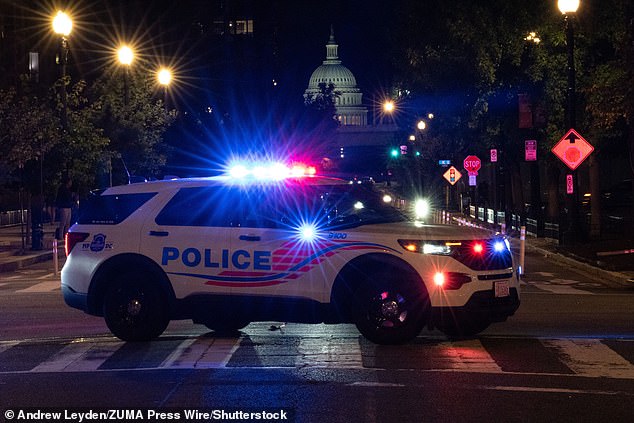Washington DC has taken dramatic steps to address a spike in youth-related disturbances by introducing a curfew for anyone under 18.
The emergency measure, effective immediately, will run for four nights as city leaders scramble to restore public safety.
Curfew Rules and Enforcement
Mayor Muriel Bowser announced that all juveniles under 18 must adhere to a curfew from 11pm to 6am through November 5.
“This is in response to several weeks of disorderly juvenile behavior which endangered both themselves and others,” Bowser said in a post on X.
The curfew applies citywide, but police have the authority to create “special zones” in areas considered high-risk, where curfew hours could start as early as 6pm.
Officers are also empowered to declare temporary curfews if groups of eight or more minors gather in a way that threatens public safety.
Chaos at Navy Yard Spurs Action
The new restrictions come after a particularly chaotic night in the Navy Yard neighborhood on Halloween.
Hundreds of teenagers gathered just after 7.30pm, initially peaceful, but the situation quickly escalated into fights and disruptions to traffic.
Dramatic footage from residents showed minors running through the park as police, National Guard personnel, and other law enforcement agencies worked to disperse the crowd.
By 11pm, the group had broken up, and five arrests had been made.
Arrests and Injuries
Among those detained, 18-year-old Kaeden Brown faced charges for allegedly carrying a knife.
Four minors, aged 14 to 16, were also arrested for public consumption of marijuana, affray, and failing to obey police instructions.
Additional arrests were made by Metro Transit Police, though exact numbers remain unclear.
One officer was injured during the melee after being thrown to the ground and required on-scene treatment by EMS. Chief Pamela A. Smith condemned the night’s behavior as “unacceptable” and confirmed police would increase their presence across the city over the holiday weekend.
National Guard Maintains Long-Term Presence
The curfew and rising law enforcement measures coincide with an ongoing National Guard deployment in the capital, initiated by former President Donald Trump in August.
Emails obtained through a court filing reveal that leadership has instructed troops to “winter” in the city, with a potential presence extending through the summer of 2026.
Although National Guard members cannot make arrests directly, officials credit their deployment with helping reduce crime.
Since the operation began on August 11, over 2,000 arrests have been made in the District, roughly 1,500 by Metro Police and the remainder by federal agencies including ICE, CBP, FBI, DEA, and ATF.
High-Profile Attacks Highlight Risks
Recent violent incidents have further fueled concern.
In early August, Edward Coristine, 19, a former DOGE staffer, was assaulted during an attempted carjacking by a group of roughly ten teenagers.
Two 15-year-olds pleaded guilty to simple assault but were given probation rather than jail time, highlighting tensions in handling juvenile crime.
Days after the attack, the National Guard deployment in DC was formally announced, and President Trump praised the operation for improving safety.
“It’s like a different place, it’s a different city,” he said, emphasizing that residents and politicians now feel safer venturing out.
Federal Oversight and Crime Crackdowns
Beyond the curfew, the president’s federalized approach has aimed to reform DC’s policing and public order.
The initiative included efforts to clean graffiti, reduce homelessness, and increase patrols.
Violent crime statistics suggest the strategy has had some effect, with homicides and assaults reportedly down around 25 percent in recent weeks.
Trump has since extended similar crime crackdowns to other major cities, including Los Angeles, Chicago, Memphis, and Portland, indicating a broader federal approach to addressing urban violence.
Share on Facebook «||» Share on Twitter «||» Share on Reddit «||» Share on LinkedIn
